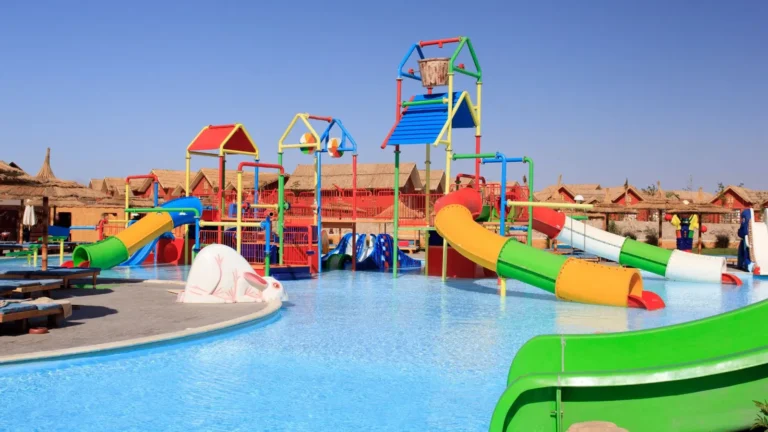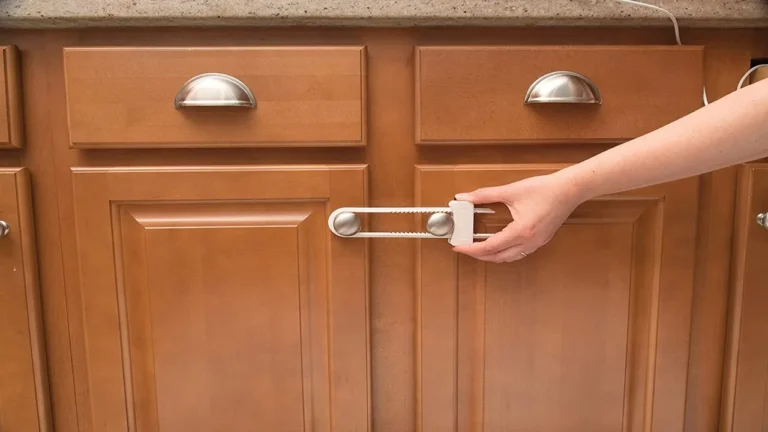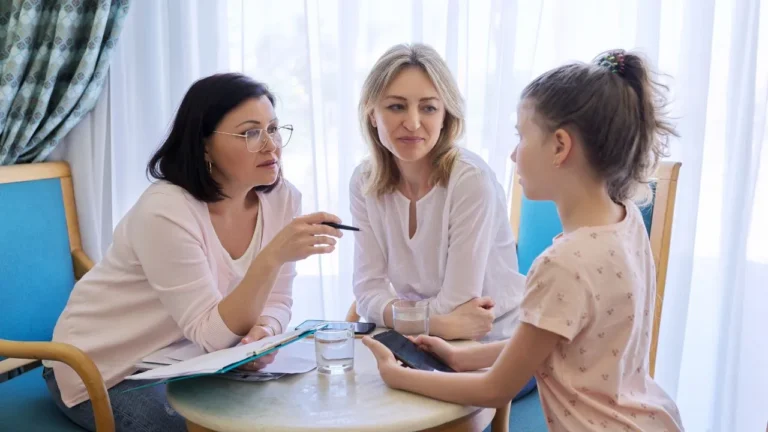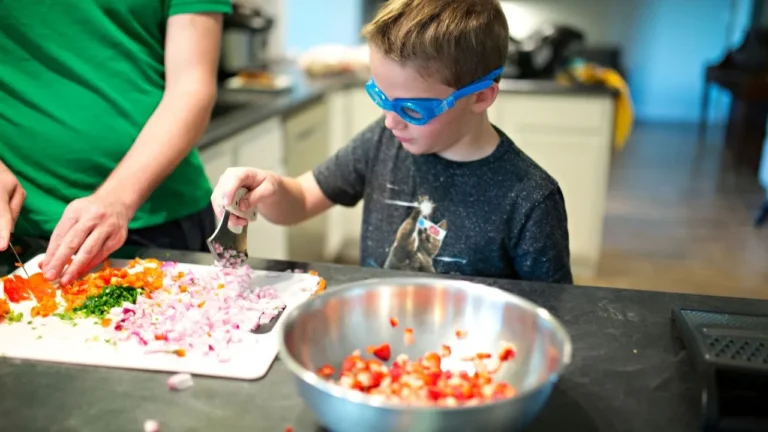Treat Sunburn In Kids! Everything You Must Know!
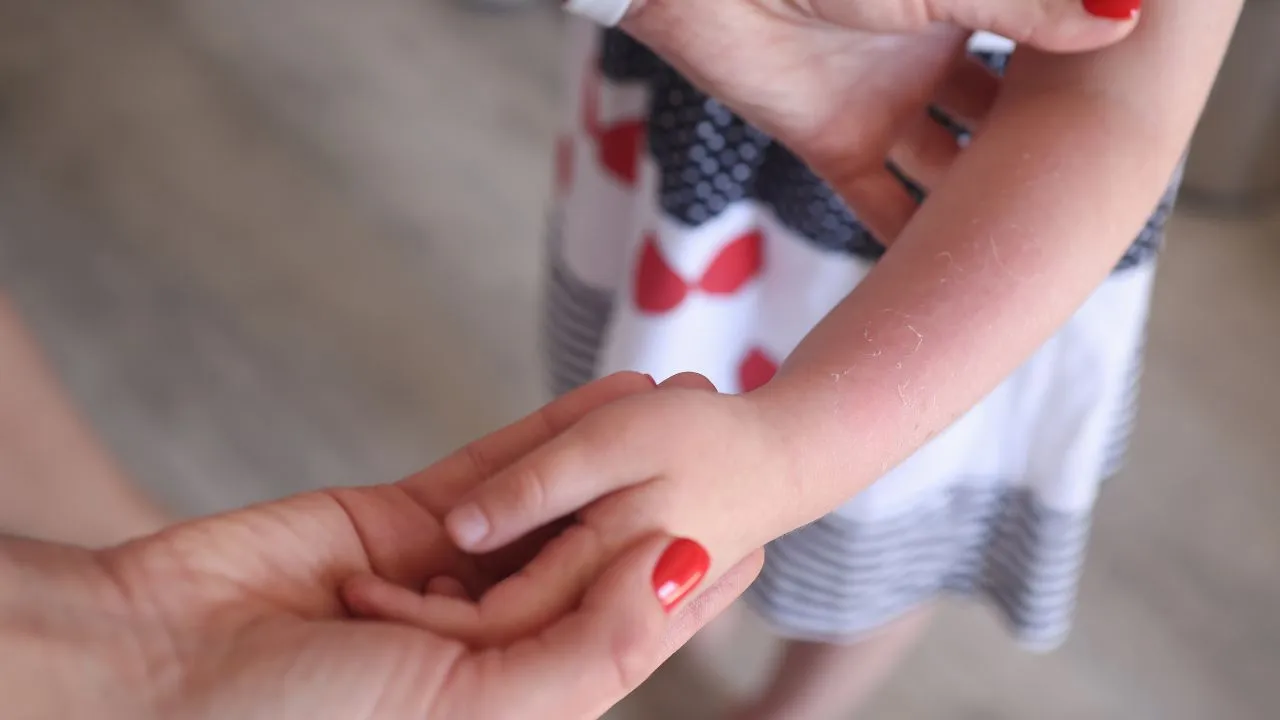
Who doesn’t love a day at the beach or an afternoon at the park? But sometimes, it turns into a scorching grip. Even the most cautious parents can find themselves dealing with a sunburned child. It’s crucial to know how to identify and treat sunburn in kids. Understanding when it’s time to consult a doctor is also important.
Let’s get real—first-degree burns are often what we deal with. However, more severe sunburns can escalate to second or even third-degree burns. It’s not just about UVB rays that burn the skin. UVA rays are the silent culprits. They age skin and penetrate far deeper into the dermis.
Both types of UV radiation can lead to DNA damage, a precursor for skin cancer. So, let’s dive in and learn how to be our kids’ skin heroes!
The sun. A source of Vitamin D, but also a culprit behind those painful sunburns in children. How do you know if your little one is sporting more than just a healthy glow? Let’s get into the nitty-gritty.
Identifying Symptoms of Sunburn In Kids
Your child could develop a sunburn within 15 to 30 minutes of exposure to the sun without proper protection. But the tricky part? The symptoms of sunburn may not appear for up to 24 hours later. Keep an eye out for:
Regardless of skin color, sunburned skin feels sensitive, hot, and itchy. Do you think sunburn discriminates? Think again. Kids with darker skin tones can get sunburned too! Because it’s hard to detect redness in darker skin, focus on other symptoms like headaches, dizziness, and muscle cramps.
Expect a recovery time of two to seven days. And yes, that peeling skin around the four to seven-day mark? Normal but equally annoying.
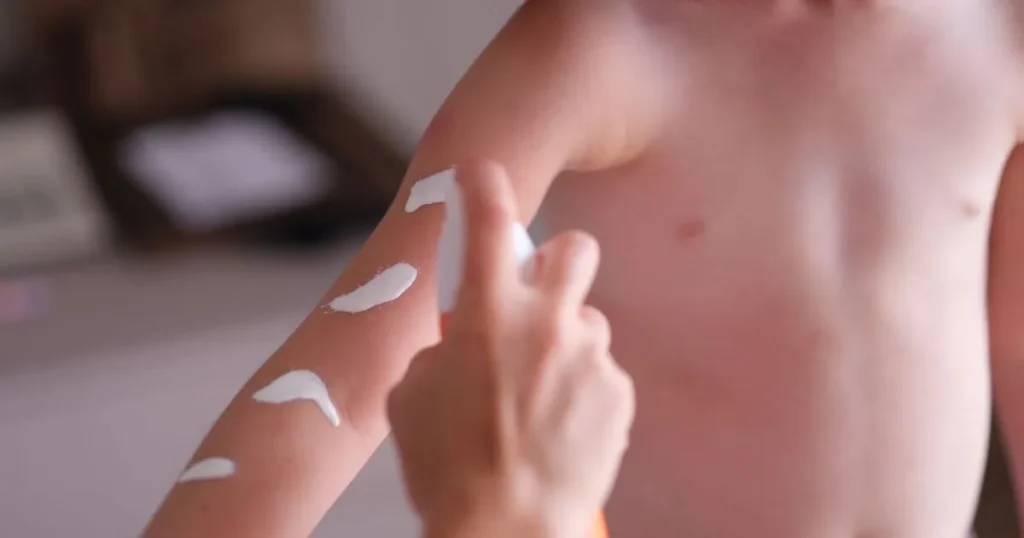
Complications That Shouldn’t Be Ignored
So, you noticed the symptoms of sunburn. What’s next? Understanding potential complications.
Blister Central
More severe sunburns can lead to blisters—those small, fluid-filled sacs that pop up uninvited. While they usually burst and heal within two weeks, resist the urge to pop them. Trust me, it’s a straight road to infection from there.
Sun Poisoning
Have you ever heard of sun poisoning? It’s essentially a severe sunburn on steroids. Symptoms could include red skin, fever, chills, and nausea. Another curveball? The term “sun poisoning” is also used for a rash caused by sun sensitivity, known as polymorphous light eruption.
Heat Stress Alert!
Don’t mix up heat stress with sunburn. Your child’s red face could be a sign of heat exhaustion, especially when combined with symptoms like weakness and nausea. If you see these signs, remove your child from the sun immediately.
What Are the Best Remedies for a Sunburn?
When treating sunburn in kids, you need to act quickly. Use the right remedies to ease their discomfort. This will help promote healing. Here are some effective steps:
If the sunburn is severe, covers a large area, or is accompanied by fever, seek medical attention immediately. Also, if you experience chills, dizziness, or confusion, seek medical attention immediately. These symptoms could indicate heat stroke or severe dehydration, which require prompt treatment.
The Sunburn Relief “Don’ts”
“Is hot water okay for sunburn?” Nope! Hot baths are a no-go. Hot showers? Avoid. Here’s what else you should dodge:
Remember, treatments for sunburn do not heal; they ease discomfort. The sunburn will be determined by how well your child’s body can repair itself.
Heat Stress or Sunburn? Know the Difference!
Ever seen a child turn red but wondered, “Is it sunburn or heat stress?” It’s crucial to tell them apart.
Heat stress symptoms:
If your child exhibits these symptoms, especially vomiting or severe dizziness, it’s medical-attention-time!
When to Dial the Doc
Think your child needs medical intervention? Call your healthcare provider if:
Prevent sunburn. Always apply sunscreen with an SPF of 15 or higher, every two hours. Choose clothing and shade wisely, especially for babies under 6 months old. And remember, if you protect your child today, you protect their skin’s future.
Now, how will you ensure your child stays sunburn-free this summer? Make a plan, because prevention always beats cure.
How long Will a sunburn last on kids?
Sunburns in kids can be quite distressing, both for the child and the parents. Typically, sunburns start to show symptoms within two to six hours after sun exposure. The peak discomfort usually hits around 24 hours, with the redness and pain starting to fade after about 48 hours. However, in more severe cases, the symptoms can last longer.
Skin damage from sunburn is caused by ultraviolet (UV) light. It can range from mild redness and tenderness to more severe cases with blisters and swelling. Mild sunburns generally resolve within three days. Moderate burns might take up to five days. They often involve peeling skin. Severe sunburns, which can cause blisters, fever, chills, and nausea, may require a week or more to heal.
For immediate relief, keep the affected child hydrated. Use cool compresses or baths to soothe the skin. Over-the-counter pain relievers like ibuprofen or acetaminophen can help manage the pain and inflammation. Applying aloe vera or hydrocortisone cream can also provide some relief. It’s crucial to avoid breaking any blisters to prevent infection.
Preventing sunburn in the first place is the best approach. Ensuring kids wear protective clothing, applying broad-spectrum sunscreen with at least SPF 30, and limiting sun exposure during peak hours (10 a.m. to 2 p.m.) are all effective strategies. If a child experiences severe sunburn symptoms, seek medical attention. It’s also important to do so if the sunburn doesn’t improve with home treatment.
Sun Safety For Kids
Sunburn in kids isn’t just a painful experience; it’s a cautionary tale for the future. Each sunburn episode significantly increases your child’s risk of developing skin cancer later in life. So, how do you protect your child from the menacing rays of the sun? Let’s dive into the science, the tips, and the remedies.
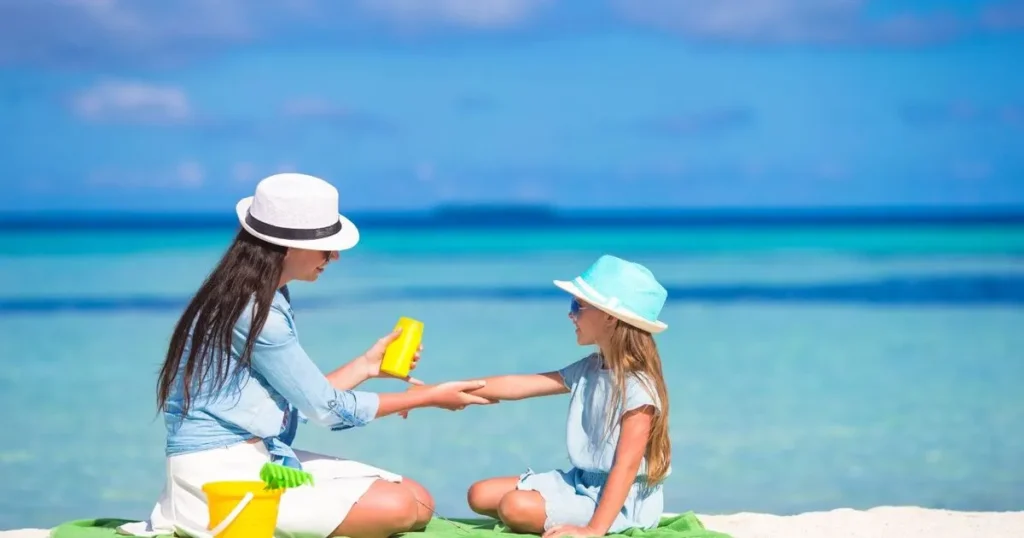
Did you know that over 50% of lifetime UV radiation exposure occurs in childhood? No wonder sun protection is crucial from an early age. Even for children with fair skin and freckles, the risk is considerably higher. To add more to the mix, certain medications like those for acne can further elevate sunburn risks.
Prevention is Key!
Still not convinced? Multiple sunburns are a leading cause of skin cancer. Don’t wait; start practicing sun safety today!
Choosing the Best Sunscreen for Kids
Sunscreen labels can be confusing. From “water-resistant” to “SPF 100,” what does it all mean? According to the American Academy of Dermatology, an SPF 30 or higher is a good rule of thumb. Look for “broad spectrum” as well, to ensure the sunscreen blocks UV radiation 100%.
Sunscreen Tips
Sunscreen for Babies: Tread Carefully
The American Academy of Pediatrics suggests keeping babies younger than 6 months old out of direct sunlight. Use hats and lightweight clothing that covers most surface areas of the skin. For small areas like the face or back of the hands, a smidgeon of sunscreen is acceptable.
Sunburn Remedies: Because Sometimes, Accidents Happen
Ouch! Despite best efforts, sunburns happen. The severity of the sunburn will determine the specific treatment. For mild sunburns, a cold compress and hydrocortisone cream can help. For more severe cases, consult a pediatrician. A topical pain reliever for sunburned skin may be prescribed, depending on the severity.
Common Sunburn Symptoms
A Parent’s Takeaway
You’re not a bad parent if your child gets a sunburn. It’s common, but it’s also a sign. It’s a reminder to step up the sun protection game. Even dark-skinned children need protection from UV rays. So, set a good example. Make sun safety a part of your family’s outdoor routine. Ensure sun safety whether your child is playing outdoors in the yard. It is vital while they are building sandcastles on the beach.
Sunburn today could lead to skin cancer in later years. Let’s act today to safeguard our children’s tomorrow. Happy sunning, but keep it safe!
Remember, when it comes to sun safety for kids, “Prevention is better than cure!

